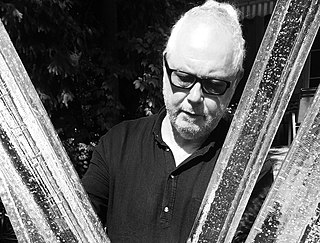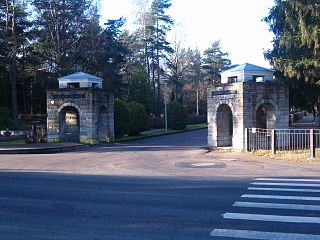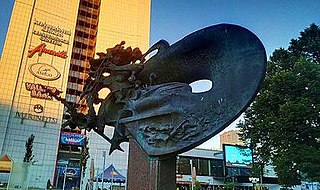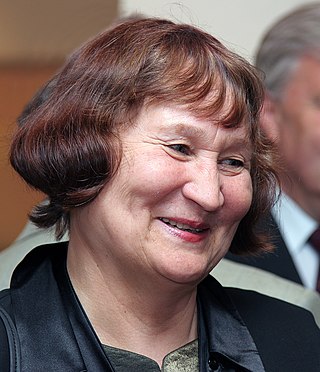
Kristjan Raud was an Estonian symbolist painter and illustrator who was one of the founders of the Estonian National Museum. Folklore elements figure heavily in his subject matter and his style is reminiscent of Primitivism. His twin brother, Paul, also became a well-known painter.

Ivo Lill was an Estonian glass artist.

Rahumäe cemetery is a cemetery located at Rahumäe in Nõmme District, Tallinn, Estonia. This municipal cemetery was established in 1903 on 29 hectares of land to meet the needs of the growing population of Tallinn. A number of congregations are present including a Jewish section established in 1911. This forested cemetery is notable for its many works by famous sculptures and chapels present within its grounds.

The Odendisa Runestone, sometimes called the Hassmyra Runestone, is a Viking Age runestone erected at Hassmyra, Västmanland, Sweden. It is exceptional in that it has a metric inscription, and in commemorating a woman.

Tiit Pääsuke is an Estonian painter.
The Art Museum of Estonia was established in 1919. Originally based in Kadriorg Palace, the museum has expanded across several sites and today exhibits both international and local art works. At the end of the 1970s, in the 1980s the first branches of the Art Museum of Estonia were founded. Starting in 1995, all of the branches offer different educational programmes for children and young people. In 1996, the exhibition hall on the first floor of Rotermann Salt Storage was opened; this branch was closed in May 2005.
The second season of Eesti otsib superstaari started on February 3, 2008 and lasted until June 2008. The hosts of first season were replaced by two male comedians/actors, Ott Sepp and Märt Avandi. Heidy Purga, Mihkel Raud and Rein Rannap continued as judges.

The Evangelical Church in Central Germany is a United church body covering most of the German states of Saxony-Anhalt and Thuringia and some adjacent areas in Brandenburg and Saxony.

Paul Raud was an Estonian painter.
These are the Lithuanian football standings from 1951–1960.

Edgar Viies was an Estonian sculptor.
WASP-104b is a hot Jupiter exoplanet that orbits the star WASP-104. It is considered to be one of the darkest exoplanets discovered. WASP-104b was discovered in 2014; according to a 2018 study at Keele University, the planet's dense atmosphere of potassium and sodium absorbs more than 97% of light it receives.
Pallas is an Estonian art association, which was established in 1918 in Tartu. The association was re-established in 1988 in Tartu.

Anu Raud is an Estonian textile artist and author.
Kristjan Kõrver is an Estonian composer.

Aili Vint is an Estonian graphic designer and painter.
The Kristjan Raud Art Award is an Estonian art award that was established in 1973. It is the oldest art award in Estonia. The award is given out annually by the Estonian Artists' Association and Tallinn City Government. The award can be given to artists, art historians, creative collectives, art projects, or an art event.
Alo Hoidre was an Estonian painter, book illustrator, and printmaker.









